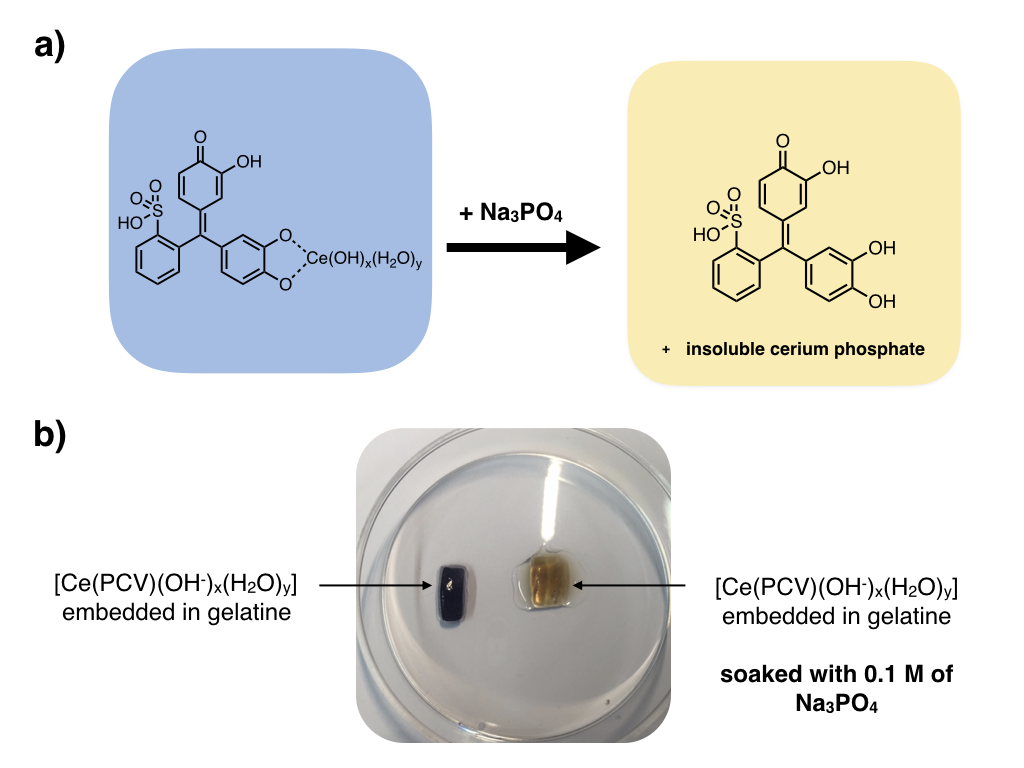Smart and simple bioinorganic polymers to detect and absorb phosphates out of water
High concentrations of phosphates in water are characteristic of eutrophication of fresh water systems, causing grave negative ecological impact in our lakes and rivers. Therefore, simple systems able to detect phosphates selectively and to extract them out of water are urgently needed. In this spirit, we embedded an inorganic complex consisting of Ce(IV) bound to a pyrocatechol violet (PCV) ligand1 into gelatine (an easily accessed, inexpensive commercial polymer) to yield a Polymeric Indicator Displacement Assay (PIDA). The polymer changes colour from blue to yellow once exposed to a solution of phosphates, indicating their absorption, effectively soaking the phosphate out of solution. The polymer is extremely easy and inexpensive to assemble in high yield, is stable at room temperature and allows naked-eye detection of phosphate.

Fig: Principle of the PIDA. a) [Ce(IV)(PCV)(OH-)x(H2O)y] embedded in gelatine forms [Ce(IV)(PCV)(OH-)x(H2O)y] ⊂ gelatine, a blue polymer, which once exposed to phosphate changes colour from blue to yellow forming cerium phosphate embedded in gelatine. b) Macroscopic view of the blue [Ce(IV)(PCV)(OH-)x(H2O)y] ⊂ gelatine and the yellow product after soaking in 0.1 M of sodium phosphate in a 100 mM HEPES pH=7.4.
[1] K. Macek, L. Moravek, Nature 178, 102–103 (1956).